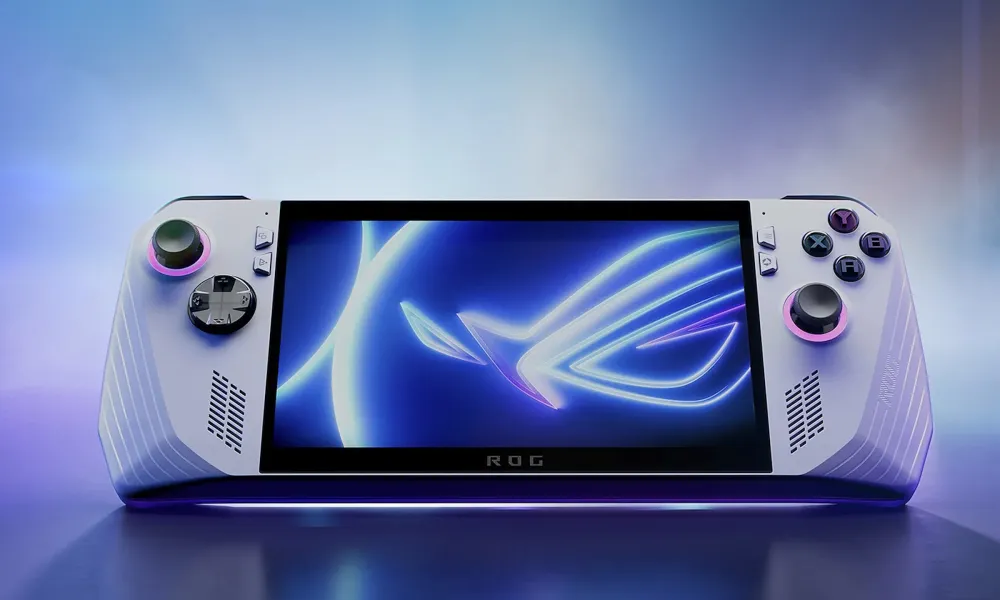More compact and portable solutions have been popular for PC gaming in recent years, replacing the traditional setup of large, RGB-lit towers. The need for high-performance gaming peripherals that don’t require a desk is growing among gamers. In order to compete with Valve’s popular Steam Deck, Asus introduced the ROG Ally, a portable gaming PC, to the market in 2023. With Windows, the Ally seeks to offer more compatibility with games and shops than the Steam Deck, which is Linux-based. In 2024, Asus unveiled the Ally X, an upgraded model that fixes some of the problems with its predecessor and promised improvements in both form and function.
The Ally X, priced at $799, is not a complete overhaul but rather an evolution of the 2023 model. It retains the AMD Ryzen Z1 Extreme processor from the original Ally, which is more than capable of handling a wide range of modern games, from less demanding indie titles to graphics-intensive games like Cyberpunk 2077. What sets the Ally X apart is its improved hardware, including 24GB of RAM and a substantial 80Wh battery that offers impressive longevity. The device continues to use a 7-inch, 1080p, 16:9 LCD screen. While the LCD panel may not match the vibrancy of an OLED display, it delivers clear visuals, though its glossy surface tends to attract fingerprints.
Though I think Valve’s Steam Deck provides a marginally superior overall experience, the Ally X has made a good impact despite some reservations about Windows as an operating system for portable gaming. The Ally X is a strong competitor in the portable gaming market because to its improved technology and small form factor.
During my time with the Ally X, I found it to be a substantial improvement over the original Ally. Its portability was particularly beneficial during my daily commutes in New York City. Although the device does not come with a case, forcing me to use the inner shell of my Steam Deck OLED case (which fit only somewhat adequately), its smaller size compared to the Steam Deck was a significant advantage. After navigating some initial frustrations with Windows 11, I was able to focus on gaming without being bogged down by hardware or software issues. The Ally X handled a variety of games, including Flintlock, Elden Ring, Destiny 2, and No Man’s Sky, with smooth performance and frame rates ranging from 40 to 60 frames per second, depending on the graphics settings. The screen’s 120Hz refresh rate allowed for even higher frame rates in supported games.
But Windows came with a number of difficulties. There were oddities with the operating system that interfered with playing Elden Ring, such when it abruptly went back to the desktop and there was no way to get back to the game. It was difficult to use the touch screen and not be able to use standard keyboard keys like Alt + Tab. The encounter was made more difficult by Windows’ frequent update interruptions and sporadic prompts. The numerous touch interactions needed to use Windows quickly caused the screen to get smeared.
The Ally X also had issues with power management. The device occasionally woke up on its own after being put to sleep, leading to uncertainty about its power state. While Windows settings can be adjusted to improve compatibility with portable devices, the operating system is inherently less suited for handheld gaming compared to alternatives like SteamOS or the Nintendo Switch’s system.
The hardware design of the Ally X is excellent in spite of these annoyances. It feels more luxurious and is more comfy than its predecessor. The d-pad, face buttons, thumbsticks, triggers, bumpers, and face buttons have all been updated to improve ergonomics and usability. The device’s shell has also been significantly increased for improved grip. In addition to being stylish, the matte black coating lessens glare, which facilitates easier viewing.
The inclusion of an additional USB-C port, which enables users to charge the device and attach external displays or peripherals at the same time, is one of the standout upgrades. By eliminating the need for additional hubs or adapters, this innovation improves the Ally X’s portability and makes it easier to use when on the road.
The Ally X has a few small hardware issues in spite of its many positive features. Particularly considering how frequently Windows must be touched to operate, the screen’s propensity to gather fingerprints might be an issue. Unintentional taps on the screen caused by the right thumbstick’s relocation frequently resulted in unwanted game actions. The device might have benefitted from a screen size that was more appropriate with a 16:10 aspect ratio display rather than the typical 16:9 format, albeit there might have been a problem with compatibility with older games.
A number of faults, including as overheating that ruined SD cards, beset the original Ally. Though it took some time for Asus to respond to these issues, the original device’s warranty was eventually extended. Additionally, the business was criticized for how it handled repair services, which prompted pledges to provide better customer care. Asus says that the SD card problem has been fixed for the Ally X and that a standard one-year warranty is included with the new model. Still, there are doubts regarding these advancements’ efficacy.
With its superior screen, longer battery life, and more functionality thanks to a second USB-C connector, the ROG Ally X is a noticeable improvement over its predecessor. The Ally X offers a solid portable gaming experience in spite of its issues with Windows. The benefits of the gadget should be weighed against Asus’s prior model’s problems before making a purchase.
If you like the article please follow on THE UBJ.
